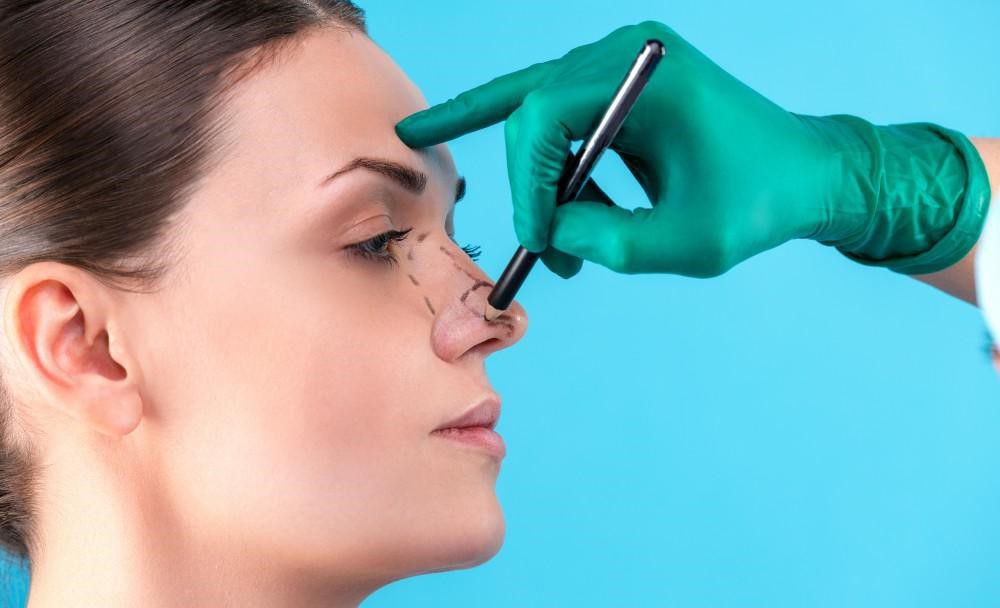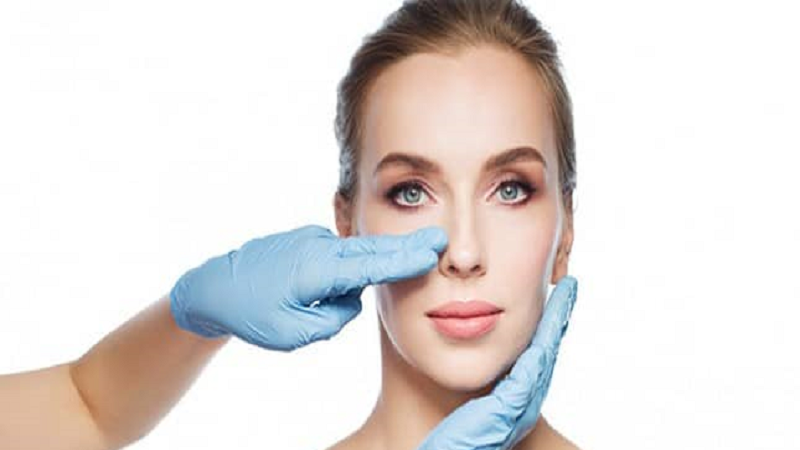Nose surgery, or in medical parlance, rhinoplasty, is a facial cosmetic procedure that is usually performed to beautify or repair the nose. The bones and cartilage of the nose or the tip of the nose are repaired and reconstructed in the operation of the nose, to correct the hump of the nose.
Sometimes in rhinoplasty, tissue is added to the nose to make the nose more beautiful after the operation. Nasal polyp surgery is another treatment performed on patients with nasal congestion. Rhinoplasty is both a cosmetic surgery and is used to remove internal obstructions and stabilize structures that may be obstructing nasal breathing.
Specialists and surgeons in Iran, after examining the shape and type of your nose in the initial consultation session, will determine the suitability of this treatment for you and the type of nose surgery (open or closed) suitable for you. To perform this surgery in Iran, the best techniques and methods of rhinoplasty with the least possible scar for patients are used.

Benefits of rhinoplasty
Performing rhinoplasty, in general, can have many benefits, the benefits of rhinoplasty include the following:
- Resize the nose and adjust it to other parts of the face
- Repairing and beautifying the overall shape of the nose and changing the width of the nose to fit the nostrils
- Improve the side view of the nose and eliminate the apparent curvature of the nose
- Reform the tip of the nose
- Correction of large, wide or upward nostrils
- Fix asymmetrical nose
What are the characteristics of rhinoplasty applicants?
A suitable applicant for this surgery must meet the following conditions:
- The growth of his face is complete.
- Have good physical health.
- Do not smoke.
- Have a positive attitude towards rhinoplasty and have a realistic expectation of the outcome of this surgery.
Types of incision techniques in rhinoplasty
To perform rhinoplasty in Iran, there are generally two types of surgery. Open rhinoplasty and closed rhinoplasty, we will further explain these two methods.
Open rhinoplasty
Open nose cosmetic surgery is performed to reshape the original nose shape and correct serious defects. The surgeon makes an incision in a strip of vertical skin separating the nostrils called the columella septum. The surgeon then lifts the skin and soft tissue from the underlying structures of the nose to see the anatomy of the nose.
Closed Rhinoplasty
Closed nose cosmetic surgery is performed to correct minor defects in the nose. The surgeon makes an incision inside the nose, then separates the skin of the nose from the bone and cartilage that support the structure of the nose. Once identified inside the nose, the surgeon can remove, shape, enlarge, or change the angle of the bone and cartilage to get the nose in the desired shape.

Rhinoplasty clinics in Iran
The consultations that are done in cosmetic surgery clinics in Iran can be very useful. The following topics will be discussed at a rhinoplasty consultation:
- The surgeon’s goals are related to the appearance of the nose and the improvement of breathing
- Various diseases, drug allergies and history of previous treatments
- Consumption of medicines, vitamins, herbal supplements, alcohol, tobacco and drugs
- Previous surgeries
The surgeon also performs the following procedures:
- Analyzing the patient’s general health status and current illnesses or risk factors
- Possible methods of nose reshaping
- Examination and measurement of the face
- Take photos
- Explain the different methods of this cosmetic surgery
- Recommend the best treatment
- Inform the patient of the possible consequences of this surgery and the complications of rhinoplasty and the possible risks of the operation
Preparation before rhinoplasty
Before performing this surgery, the cosmetic surgeon asks the patient to do the following:
- blood test
- Taking certain medications or adjusting your current medication schedule
- Quit Smoking
- Avoid aspirin, anti-inflammatory drugs, and herbal supplements that increase the risk of bleeding
- Our plastic surgeon determines the location of the rhinoplasty.

Stages of rhinoplasty surgery
The steps of rhinoplasty surgery are as follows:
Step 1: Anesthesia
The patient receives medication to be completely comfortable during the operation. Rhinoplasty can be performed under general anesthesia or by receiving intravenous sedation. Our specialists recommend the best method of anesthesia.
Step 2: Cut through the nose
As we mentioned before, Rhinoplasty is performed in one of these two ways:
- Closed surgery: The surgeon makes incisions inside the nose so that they are not visible.
- Open surgery: The incisions are made on the columella, the tissue strip that separates the nostrils.
Through these incisions, the surgeon gently lifts the skin covering the cartilage and bones of the nose so that it can change the shape of the structure of the nose.
Step 3: Reshape the structure of the nose
A very long nose is corrected by shaving the bone or removing the cartilage. Sometimes cartilage links and grafts need to be used in rhinoplasty. Transplant cartilage is usually taken from the septum, the middle part of the nose, although ear cartilage or, rarely, chest cartilage can be used if necessary.
Step 4: Correct the deviation of the nasal septum
If the nasal septum is deviated, the septum can be flattened and the bulges inside the nose reduced to improve breathing.
Step 5: Close the cut
The surgeon removes the tissue and skin of the nose after cutting the underlying structure of the nose and shaping it properly, and stitches the incisions. If necessary, the surgeon makes other incisions in the natural wrinkles of the nostrils to resize them.
Rhinoplasty postoperative care
A splint or tampon is inserted into the nose during the recovery period after rhinoplasty, and a splint or dressing is used for the external part of the nose to protect new structures during healing.
The plastic surgeon will advise the patient on the following topics:
- How to care for the surgical site
- Topical or oral medications that facilitate the healing process and reduce the chance of infection.
- Warning signs that may be seen at the surgical site or endanger the health of the body.
- Time to return to the beauty clinic

